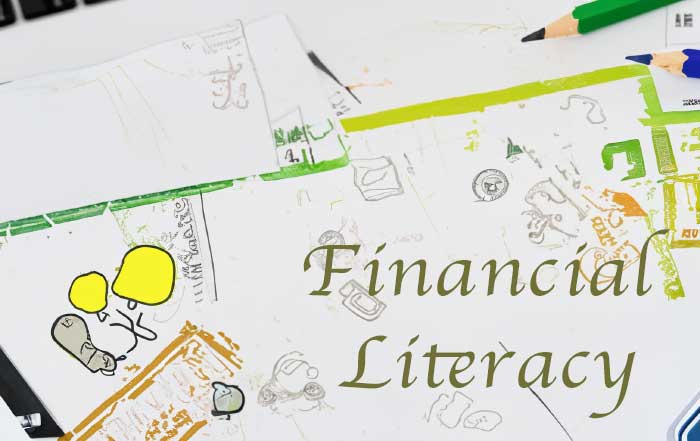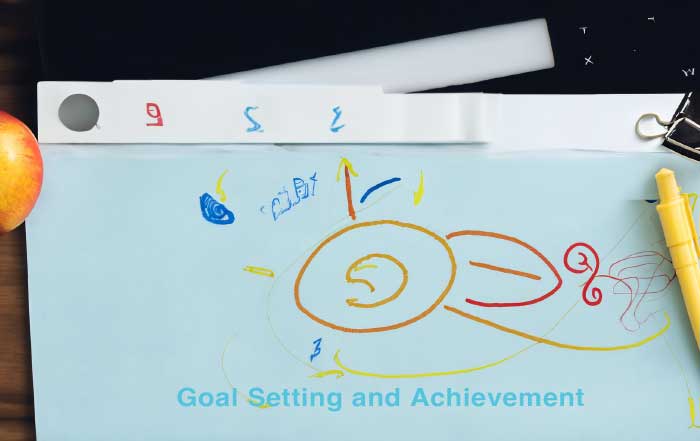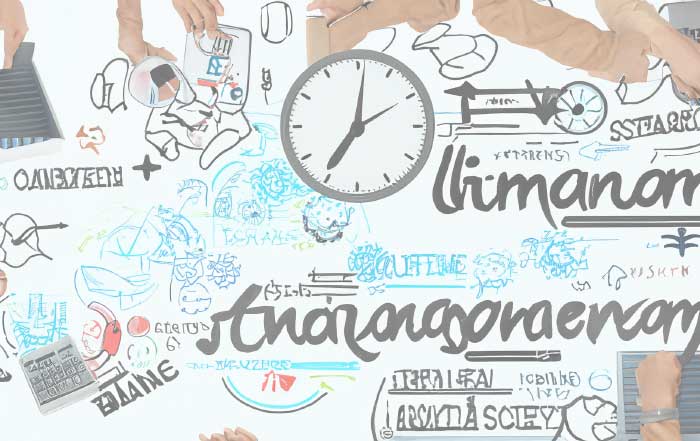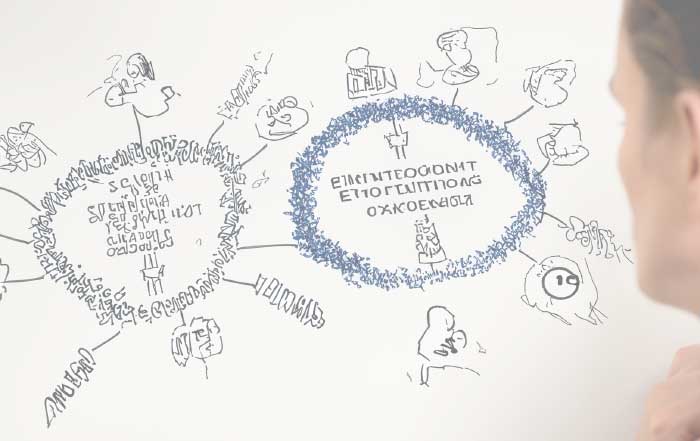Business leaders across the globe are confronted with a multifaceted and dynamic environment that demands not only operational agility but also strategic foresight in order to thrive. The evolving international marketplace in 2025 is characterized by an intricate interplay of geopolitical tensions, fluctuating economic conditions, shifting regulatory requirements, and transformative technological innovations, all of which create both challenges and opportunities for enterprises determined to secure a competitive edge. In this climate, organizations must harness robust analytical frameworks and sustainable practices to steer their operations toward long-term success, while simultaneously addressing evolving social expectations and environmental responsibilities.
Global Economic Dynamics and Geopolitical Tensions
The economic arena has never been more interdependent and volatile, with international trade relationships continuously impacted by diplomatic standoffs, evolving regulatory regimes, and unexpected shifts in market sentiment. Geopolitical tensions in key regions often translate into trade barriers and sudden policy changes that disrupt global supply chains, compelling companies to rethink sourcing strategies and diversify their networks. The modern enterprise must now interpret signals from political developments as indicators of both risk and potential opportunity, deploying scenario planning and market intelligence tools to anticipate and counterbalance these influences.
In regions where trade disputes and diplomatic friction are commonplace, businesses are learning to mitigate uncertainty by investing in resilient supply chain infrastructures and establishing flexible sourcing models. For instance, enterprises that traditionally relied on a single source of raw materials are increasingly adopting diversified procurement strategies that incorporate alternative markets. This proactive approach not only safeguards production schedules but also insulates companies from sudden tariff impositions and currency fluctuations. Organizations like You Save Our World emphasize sustainable business practices in these challenging times, as highlighted by their dedicated resource on sustainable business practices, and maintain close monitoring of emerging trends by referring to comprehensive research provided by institutions such as the World Bank and the International Monetary Fund.
Strategic adaptation in the face of geopolitical turbulence also involves developing collaborative relationships with governmental agencies and industry peers. This collective approach enables firms to navigate diplomatic disputes and regulatory shifts with greater assurance. For example, engagement in cross-border initiatives and regional trade partnerships not only offers insights into local market dynamics but also strengthens the negotiation position of businesses when confronted with sudden policy changes. Thought leaders from reputable organizations like Harvard Business Review and Bloomberg have often stressed the value of such alliances, which allow companies to share risk, pool resources, and foster innovation through collaborative problem-solving.
Regulatory Shifts and Economic Uncertainties
The legal and regulatory framework in 2025 is in a state of constant evolution, driven by both environmental imperatives and shifting public expectations regarding corporate ethics and transparency. New legislation aimed at reducing environmental footprints and enhancing labor rights is compelling companies to reexamine their operational models. In many instances, regulatory changes are spurring innovation rather than stifling growth, as businesses are forced to reconfigure their production methods and supply chains to comply with stricter standards. This shift has given rise to an era where sustainable practices are not only ethically compelling but also economically advantageous, as companies uncover cost efficiencies and market differentiation through green initiatives.
Many forward-thinking enterprises have embraced these changes by adopting best practices in corporate governance and environmental stewardship. For example, organizations that exceed baseline regulatory requirements are often better positioned to attract socially responsible investors and loyal customers, thereby reinforcing their market reputation. You Save Our World provides valuable insights on environmental challenges and regulatory compliance, as detailed on their page about the expanding landscape of environmental regulatory compliance in 2025, offering case studies and analytical frameworks that illustrate the long-term benefits of proactive adaptation.
Economic uncertainties, including moderate inflation and rising interest rates, further complicate the operating environment. Inflationary pressures, driven by supply chain disruptions and fluctuating commodity prices, necessitate a rethinking of pricing strategies and cost management. Companies are increasingly turning to advanced analytics to monitor key economic indicators and forecast market trends, thereby enabling more precise adjustments to production volumes and marketing strategies. Detailed economic forecasts from institutions such as the OECD and Reuters offer valuable guidance that supports strategic decision-making in turbulent times.
A holistic understanding of these economic dynamics is essential for businesses to navigate uncertainties effectively. Robust market intelligence and regular scenario analysis provide decision-makers with a comprehensive overview of potential risks and opportunities. By integrating these insights into strategic planning, companies can better prepare for unexpected disruptions while capitalizing on emerging trends that facilitate sustainable growth. For additional perspectives on economic policy and market trends, organizations frequently consult resources such as Forbes and McKinsey, which provide in-depth analyses and data-driven recommendations tailored to modern enterprises.
Technological Innovations and Digital Transformation
Technological advancements have fundamentally reshaped the way businesses operate, introducing a new era of digital transformation that is marked by rapid innovation and increasing reliance on data-driven decision-making. In 2025, emerging technologies such as artificial intelligence (AI), blockchain, and the Internet of Things (IoT) are revolutionizing traditional business processes by enhancing efficiency, transparency, and customer engagement. These transformative tools are not merely operational enhancements; they represent critical strategic assets that empower companies to better predict market behavior, optimize supply chains, and deliver personalized customer experiences.
AI-powered analytics, for instance, allow organizations to process vast quantities of data in real time, uncovering insights that drive smarter decisions. Companies are leveraging machine learning algorithms to predict consumer trends, manage inventory levels, and tailor marketing efforts with unprecedented precision. In many industries, these digital innovations have led to significant cost reductions and operational improvements, ensuring that companies remain agile in the face of rapid change. Detailed discussions on how technology shapes business innovation can be found in reports published by reputable institutions such as the Stanford Social Innovation Review.
Blockchain technology, on the other hand, is increasingly being employed to secure transaction records and enhance supply chain transparency. By creating immutable digital ledgers, businesses can verify the authenticity and origin of goods, thus fostering greater consumer trust and ensuring compliance with ethical sourcing standards. Companies that integrate blockchain into their operations are often better able to detect and mitigate fraudulent activities, thereby protecting both their financial interests and brand reputation. Further insights into the impact of blockchain on global commerce can be explored through resources provided by United Nations initiatives on sustainable development and trade transparency.
The proliferation of IoT devices has enabled real-time monitoring of production processes, equipment performance, and even customer behavior. Smart sensors and interconnected devices allow companies to detect inefficiencies and potential breakdowns before they escalate into major operational disruptions. This continuous monitoring capability not only improves the reliability of supply chains but also contributes to the overall safety and efficiency of production environments. Many organizations are now implementing comprehensive digital transformation strategies that incorporate IoT solutions to streamline operations and reduce waste. Those interested in cutting-edge insights into digital transformation are encouraged to review additional analysis on the ever-evolving craft of effective communication and the evolving landscape of global business in 2025.
Balancing innovation with potential risks remains a central challenge for enterprises embracing digital technologies. While the benefits of AI, blockchain, and IoT are substantial, they also introduce vulnerabilities such as cybersecurity threats and data privacy concerns. Companies must therefore invest in robust cybersecurity measures and continuous staff training to mitigate these risks. Emphasizing transparency and ethical data usage, businesses can not only enhance security but also build stronger relationships with customers who increasingly value privacy and data integrity. For further exploration of digital security and innovative practices, business leaders can consult detailed reports available from sources like Bloomberg.
Sustainability and Corporate Social Responsibility
The imperative of sustainability has evolved from a peripheral consideration to a core strategic priority for businesses operating in 2025. With consumers, investors, and regulators placing a premium on environmental responsibility, companies are increasingly expected to implement practices that reduce ecological footprints and promote long-term resource stewardship. This trend has spurred significant innovation in areas such as renewable energy, waste reduction, and sustainable supply chain management, establishing sustainability as a fundamental driver of corporate strategy.
A critical aspect of sustainable business practices involves the integration of environmental initiatives into everyday operations. Enterprises are investing in advanced recycling programs, green infrastructure, and energy-efficient technologies to minimize waste and reduce carbon emissions. You Save Our World offers comprehensive guidance on implementing effective recycling programs, as discussed on their page about plastic recycling, which serves as a practical model for organizations seeking to improve their environmental performance.
Many companies are adopting circular economy principles that prioritize resource efficiency and waste reduction. By reusing materials and repurposing waste products, businesses can reduce costs and enhance sustainability simultaneously. This approach not only addresses environmental challenges but also creates new revenue streams through the sale of recycled materials. Research from the United Nations Environment Programme and the World Economic Forum reinforces the economic viability of circular practices and underscores their potential to drive innovation and competitiveness.
Corporate sustainability extends beyond environmental initiatives to encompass social responsibility and ethical governance. In today’s interconnected world, stakeholders demand transparency and accountability from businesses regarding labor practices, supply chain ethics, and community engagement. Leaders who integrate these values into their operational frameworks often enjoy enhanced brand loyalty and stronger market positioning. Resources detailing successful sustainability strategies are available on the sustainability leadership in 2025 page, which outlines best practices and case studies that highlight the benefits of a holistic approach to environmental and social governance.
Investments in sustainable technology and eco-conscious practices also yield significant long-term benefits by reducing operational costs and mitigating regulatory risks. For example, enterprises that adopt renewable energy sources or optimize energy usage through smart grid technology can achieve substantial savings over time. These investments not only improve a company’s bottom line but also demonstrate a commitment to the global agenda for environmental preservation—a commitment that is increasingly valued by customers, investors, and regulatory bodies alike. Detailed insights into resource management and innovative recycling strategies can be explored further on the recycling as a cornerstone of resource management in 2025 page.
Sustainability is also intricately linked with corporate reputation, as brands that demonstrate genuine environmental stewardship tend to secure greater trust among consumers. This trust is often built on a foundation of transparent reporting and clear communication regarding sustainability goals and achievements. Enterprises that effectively articulate their commitment to green practices not only enhance their market image but also foster long-term loyalty among stakeholders. Additional perspectives on effective communication strategies can be found on the ever-evolving craft of effective communication resource, which offers practical advice on maintaining clarity and transparency in corporate messaging.
Talent Management and Legal Considerations
In the modern business ecosystem, the strategic management of human capital is as critical as technological innovation and environmental stewardship. Amid an increasingly competitive global market, retaining and nurturing talent has emerged as a vital priority for enterprises that seek to sustain growth and innovation. Workforce dynamics in 2025 are influenced by rapidly evolving skill requirements, flexible work arrangements, and shifting expectations regarding professional development and corporate culture.
Employee retention strategies now extend beyond competitive compensation to include robust career development programs, mentorship initiatives, and flexible work policies that align with contemporary expectations for work–life balance. You Save Our World explores innovative approaches to talent management on their page dedicated to the power of self-confidence for personal growth, professional success, and sustainable living, highlighting the importance of fostering an environment where employees feel valued and empowered to contribute their best work.
The legal landscape surrounding employment is also undergoing significant transformation, particularly in relation to contractual agreements and employee mobility. Recent regulatory developments have led to a reconsideration of noncompete clauses and other restrictive covenants that previously limited employee mobility. Jurisdictions that have moved to relax these constraints aim to create a more dynamic labor market, encouraging innovation and the free exchange of ideas. In this evolving environment, businesses must revise traditional contract frameworks to ensure that employment agreements are both legally compliant and aligned with strategic workforce objectives. Detailed legal insights and guidance on intellectual property rights are available on the evolving landscape of intellectual property rights in 2025 page.
Ensuring that legal agreements are clear, fair, and adaptable is essential to mitigating disputes and maintaining operational continuity. Comprehensive dispute resolution strategies and proactive legal audits can help organizations preemptively address potential conflicts before they escalate into costly litigation. For example, robust legal frameworks that emphasize transparent communication and equitable conflict resolution often lead to improved employee morale and reduced turnover. Further elaboration on dispute resolution mechanisms can be found on the effective dispute resolution: a pathway to sustainable living in 2025 and beyond resource, which offers best practices for managing legal risks in a rapidly changing business environment.
As globalization intensifies, the challenge of integrating a diverse, multinational workforce becomes ever more pronounced. The recruitment and retention of highly skilled foreign professionals demand a nuanced understanding of immigration laws, cultural integration, and tailored onboarding processes. Companies that successfully navigate these complexities are often better positioned to innovate, drawing on the rich tapestry of perspectives that a diverse workforce provides. Guidance on nurturing cross-cultural competencies and inclusive practices is further elaborated on the cultivating sustainable prosperity: the rising importance of home herb gardens page, which, although focused on sustainable living, underscores the broader importance of diversity in fostering resilience and creativity.
Financial Strategies in a Volatile Environment
Financial prudence and strategic resource management are critical as businesses grapple with inflationary pressures, fluctuating interest rates, and volatile currency markets. The contemporary financial landscape in 2025 requires organizations to adopt flexible, data-driven approaches that allow for rapid adjustment in response to changing market conditions. In this context, optimizing cash flow management, refining pricing strategies, and negotiating favorable terms with financial institutions are key components of a resilient financial strategy.
Inflation remains a persistent challenge for many companies, affecting everything from raw material costs to labor expenses. To combat these pressures, enterprises are increasingly turning to advanced financial modeling and scenario analysis, which enable them to forecast potential impacts and adjust their strategies accordingly. Resources such as detailed reports from the International Monetary Fund and the OECD provide valuable insights into emerging trends and policy adjustments that can influence inflation trajectories. Organizations are also exploring the use of hedging instruments and forward contracts as a means to manage currency risk and stabilize profit margins in an uncertain economic environment.
Rising interest rates pose additional challenges, particularly for companies that rely heavily on borrowed capital to finance expansions and operational investments. Strategic debt management, including the refinancing of existing loans and the optimization of borrowing portfolios, is essential to mitigating the adverse effects of higher financing costs. Financial experts recommend maintaining robust liquidity reserves and deploying advanced treasury management systems to ensure that organizations remain agile and responsive to shifts in interest rate environments. For further details on financial strategies and market trends, industry publications such as Forbes and McKinsey offer comprehensive analyses that support data-driven decision-making.
The integration of fintech solutions is revolutionizing traditional banking relationships and financial operations. By leveraging innovative digital platforms, companies can streamline payment processes, reduce transaction fees, and gain real-time insights into cash flow dynamics. These technologies not only enhance efficiency but also provide greater transparency and accountability in financial management. For example, automated reconciliation tools and online payment systems have become indispensable for small and medium-sized enterprises looking to optimize their financial operations. Further exploration of fintech innovations and their implications for global trade is available on the fostering financial literacy and advancing sustainable investing in 2025 page, which underscores the role of technology in modern financial management.
Collaborative Approaches and Global Partnerships
In an interconnected world, collaborative strategies and cross-border partnerships are emerging as essential components of business resilience and innovation. By forging alliances with strategic partners, industry peers, and governmental agencies, companies can share insights, pool resources, and collectively address challenges that are too large for any one organization to tackle alone. This spirit of collaboration extends across various dimensions, from environmental stewardship to digital transformation and talent management.
Global partnerships have proven particularly effective in addressing the challenges posed by climate change, regulatory shifts, and market volatility. For instance, multinational corporations often engage in joint ventures and strategic alliances that facilitate knowledge sharing and resource pooling. These collaborations not only reduce individual risk but also stimulate innovation by combining diverse expertise and perspectives. The evolving landscape of sustainable business innovations driving environmental progress resource offers numerous examples of how collaborative efforts have led to breakthrough solutions in sustainability and operational efficiency.
Regional trade agreements and multilateral organizations play a pivotal role in shaping the global business environment. Participation in international frameworks—such as those established by the United Nations and World Trade Organization—enables companies to access vital market intelligence and negotiate more favorable terms in cross-border transactions. This level of engagement is critical not only for mitigating risks but also for capitalizing on emerging opportunities in new markets. For a more detailed perspective on the importance of global connectivity and market integration, business leaders may refer to in-depth studies available on reputable platforms like Reuters and Bloomberg.
Collaboration is also a key driver in the realm of sustainable innovation. Whether through public–private partnerships, academic–industry collaborations, or community-based initiatives, joint efforts are catalyzing the development of cutting-edge solutions that address both environmental challenges and operational inefficiencies. You Save Our World has consistently championed the value of such collaborations, as evidenced by their detailed insights on local food sourcing as a cornerstone of sustainable living and zero carbon architecture, both of which highlight the transformative potential of collective action.
The Future of Business Strategy: Resilience and Adaptability
As enterprises navigate the complexities of the global business environment in 2025, the ability to remain agile and resilient is emerging as a key determinant of long-term success. The modern organization must continuously reevaluate its strategic priorities, invest in robust risk management frameworks, and foster a culture of continuous improvement that embraces change rather than resisting it. In doing so, companies are better positioned to not only survive periods of economic turbulence but also to seize opportunities that arise from rapid market shifts.
Resilience in this context is built on a foundation of integrated risk management and proactive strategic planning. Enterprises are increasingly adopting holistic frameworks that incorporate market intelligence, financial analytics, and stakeholder engagement to forecast potential disruptions and devise contingency plans. By aligning operational practices with long-term strategic goals, businesses can create a self-reinforcing cycle of innovation and adaptability that supports sustainable growth. Detailed analyses on risk management and adaptive strategies can be found on resources such as environmental challenges in 2025: navigating a critical crossroads and the evolving landscape of global business in 2025.
A central element of strategic resilience is the commitment to continuous learning and technological adoption. The rapid pace of innovation in today’s digital era demands that organizations remain at the forefront of technological trends, continuously integrating new tools and methodologies that drive efficiency and enhance competitive positioning. This commitment to ongoing education extends to all levels of the organization, from frontline employees to senior executives, ensuring that each stakeholder is equipped with the skills and knowledge necessary to navigate an ever-changing landscape. For those seeking to deepen their understanding of effective communication and leadership, additional insights are available on the embracing sustainable living and optimizing time management in 2025 page.
Adaptability also hinges on a company’s ability to harness the power of data and analytics. By leveraging advanced data processing and predictive modeling techniques, businesses can gain real-time insights into market conditions and adjust their strategies accordingly. This data-centric approach not only improves operational efficiency but also enables companies to identify emerging trends and consumer behaviors before they become widely apparent. For a more detailed exploration of digital transformation and data analytics, interested readers may explore articles published by reputable sources such as McKinsey and Stanford Social Innovation Review.
Finally, resilience and adaptability are deeply intertwined with the broader commitment to corporate social responsibility. Businesses that integrate ethical practices, environmental stewardship, and transparent governance into their core strategies are better equipped to withstand external shocks and build lasting relationships with stakeholders. By investing in sustainable practices and fostering a culture of inclusivity and innovation, companies not only secure their market position but also contribute positively to the global community. For more on the interplay between sustainability and business strategy, the global call to rethink waste and cleaner air examination pages offer comprehensive perspectives.
Integrating Environmental Initiatives with Operational Excellence
The long-term viability of modern enterprises is intrinsically linked to their ability to integrate robust environmental initiatives with operational excellence. As regulatory pressures mount and stakeholder expectations evolve, companies are increasingly required to address not only profitability but also their broader impact on the planet. This dual mandate—balancing fiscal responsibility with environmental stewardship—has spurred the development of innovative practices that transform traditional business models into engines of sustainable progress.
At the operational level, many organizations have embraced green technologies and eco-friendly practices that optimize resource use and minimize waste. Whether through the installation of energy-efficient lighting systems, the adoption of renewable energy sources, or the implementation of comprehensive waste recycling programs, these initiatives serve to reduce operational costs while also bolstering corporate reputation. Detailed case studies on successful green initiatives can be found on the transformative power of composting practices, partnerships, and progress page, which provides insights into how sustainable practices are reshaping modern business operations.
Beyond internal operations, sustainable practices extend to the broader supply chain. Companies are increasingly working with suppliers and partners who share their commitment to sustainability, ensuring that environmental considerations are embedded throughout the entire value chain. Initiatives such as eco-friendly packaging, reduced transportation emissions, and the adoption of circular economy principles not only contribute to environmental goals but also generate significant cost savings and operational efficiencies. Insights into these supply chain innovations are available on the plastic alternative packaging: a sustainable future for 2025 and beyond page, which explores alternative strategies for minimizing plastic use and waste.
Environmental initiatives are also a critical component of brand differentiation and corporate storytelling. Consumers are increasingly drawn to brands that demonstrate a genuine commitment to sustainability, and companies that invest in transparent reporting and ethical practices often enjoy enhanced customer loyalty and market differentiation. Internal campaigns that emphasize the positive impact of environmental initiatives—ranging from waste reduction to community engagement—help reinforce a culture of responsibility and innovation. More detailed narratives on building brand trust through sustainability can be found on the environmental and personal benefits of a clean home page, where practical examples illustrate how sustainable practices drive both economic and social value.
Strengthening Corporate Governance Through Ethical Practices
Robust corporate governance is increasingly recognized as the cornerstone of long-term business success, particularly in an environment marked by rapid technological change and complex regulatory landscapes. Ethical practices, transparency, and accountability are no longer optional; they are essential for building trust among investors, employees, and customers alike. Modern boards of directors are placing greater emphasis on environmental, social, and governance (ESG) criteria, integrating these principles into every facet of corporate strategy.
Leaders in the business world understand that ethical governance not only mitigates legal risks but also enhances overall organizational performance. Proactive compliance with evolving regulatory standards—ranging from labor rights to environmental stewardship—serves to strengthen a company’s competitive position. For those seeking to understand the latest trends in corporate governance, the imperative of preserving fresh water: addressing scarcity and water shortages resource offers valuable perspectives on how environmental challenges are reshaping regulatory priorities.
Transparent and ethical business practices are further reinforced by internal policies that promote accountability and open communication. Establishing clear lines of responsibility, encouraging whistleblower protections, and ensuring regular oversight by independent auditors are measures that fortify the integrity of corporate operations. The adoption of these practices not only safeguards against financial and reputational risks but also fosters a culture of trust that permeates every level of the organization. Additional discussions on ethical governance and responsible leadership can be found on the sustainability education for a prosperous planet page.
Embracing the Future with Strategic Vision
As businesses navigate the complexities of 2025 and beyond, the ability to articulate a clear and forward-looking strategic vision is paramount. Modern enterprises must continuously innovate, adapting to shifts in global markets while remaining anchored in core values of sustainability, ethical conduct, and operational excellence. This strategic vision not only informs day-to-day decision-making but also serves as a beacon for long-term growth and resilience.
Visionary leaders understand that the future of business hinges on the ability to balance tradition with innovation. By investing in research and development, exploring new market opportunities, and remaining vigilant about global trends, companies can create a roadmap that anticipates and addresses emerging challenges. You Save Our World champions this approach by offering a wealth of resources and insights through its dedicated platform, inviting business leaders to explore topics ranging from sustainable home water conservation strategies for a thirsty planet to the urgent need for alternative energy in 2025.
Strategic vision in this era is not solely about growth and profitability—it is equally about impact and legacy. Enterprises are increasingly aware that the choices they make today will reverberate through future generations, affecting not only market dynamics but also the well-being of communities and the planet. By aligning strategic initiatives with broader social and environmental goals, companies can build lasting legacies that inspire trust and foster collaborative progress. For further inspiration on forward-thinking business practices, the global imperative of resource preservation page provides a comprehensive overview of innovative strategies aimed at safeguarding the planet’s vital resources.
Conclusion
In a business environment marked by unprecedented complexity and rapid change, enterprises that combine strategic foresight, technological innovation, and sustainable practices are best positioned to succeed. The challenges posed by geopolitical tensions, regulatory shifts, economic uncertainties, and evolving consumer expectations are formidable, yet they also present unique opportunities for organizations that are willing to embrace transformation. Leaders who integrate robust risk management, ethical governance, and data-driven decision-making into their strategic frameworks can build resilient enterprises capable of thriving in the dynamic global marketplace of 2025.
By leveraging advanced digital technologies, fostering collaborative partnerships, and committing to environmental stewardship, companies not only enhance their competitive advantage but also contribute to a more sustainable and inclusive future. Through a deep understanding of both market trends and societal imperatives, businesses can craft strategies that are as adaptive as they are visionary, ensuring that they remain relevant and impactful in an ever-evolving landscape. The synthesis of global awareness, innovation, and ethical practices offers a pathway to enduring success—one that transforms challenges into opportunities and risks into rewards.
The journey toward sustainable growth is an ongoing process of learning, adapting, and leading by example. Enterprises that dare to envision a future where profit and purpose coexist harmoniously are the ones that will ultimately leave a lasting legacy. As organizations continue to navigate the complexities of 2025, the insights shared by thought leaders and institutions worldwide serve as a guiding light, inspiring a new era of business that is resilient, responsible, and remarkably dynamic.
For those seeking further insights on the evolving global business landscape, a wealth of additional resources is available through You Save Our World. Comprehensive analyses and expert perspectives can be found on topics ranging from effective dispute resolution to the evolving landscape of global business, providing valuable guidance for every stage of the business journey.
In the spirit of innovation and responsible stewardship, businesses are encouraged to not only adapt to change but to lead it. With a clear strategic vision, a commitment to sustainability, and an unwavering focus on ethical practices, organizations can transform challenges into stepping stones toward a brighter, more sustainable future—a future in which economic growth and environmental well-being are not mutually exclusive but are, instead, mutually reinforcing.
By embracing this holistic approach, enterprises around the world can not only weather the storms of uncertainty but also chart a course toward enduring success and positive societal impact. As the landscape of global commerce continues to evolve, the insights and strategies outlined here offer a comprehensive blueprint for navigating the challenges of today while building a resilient foundation for tomorrow.
For additional perspectives on sustainable strategies and eco-conscious business practices, readers are invited to explore further resources such as sustainability leadership in 2025 and the expanding landscape of environmental regulatory compliance in 2025, both of which provide detailed explorations of the frameworks that are driving change in modern enterprises.
In this era of rapid transformation, the ability to integrate cutting-edge technology, ethical governance, and sustainable practices will determine which organizations stand the test of time. By investing in innovation, fostering collaborative partnerships, and remaining attuned to global trends, companies can create lasting value for shareholders, employees, and the communities they serve. The future is as challenging as it is promising, and those who embrace the journey with resolve and foresight will undoubtedly emerge as leaders in the new global marketplace.
As businesses forge ahead into an uncertain yet opportunity-rich future, the confluence of strategic vision, resilience, and sustainability will continue to define the new paradigm of success. The evolution of global commerce in 2025 is not merely a tale of adaptation, but a celebration of human ingenuity and the relentless pursuit of progress. In this transformative era, every challenge encountered is an invitation to innovate, every risk a catalyst for change, and every success a testament to the power of visionary leadership.
By embedding robust sustainability practices, adopting cutting-edge digital technologies, and championing ethical governance, modern enterprises are redefining what it means to be successful in a global economy characterized by rapid change and complexity. The journey is arduous yet inspiring, marked by continuous learning and an unwavering commitment to making a positive impact. As the global business landscape continues to evolve, organizations that dare to innovate and lead by example will find themselves not only surviving but thriving—creating a legacy of resilience, responsibility, and sustainable progress for generations to come.
Explore more insights and detailed analyses on related topics through You Save Our World and its extensive range of resources, including dedicated pages on plastic recycling, sustainable business practices, and environmental awareness. Each resource offers valuable perspectives that help shape a future where business success and global sustainability move forward hand in hand.
This comprehensive perspective on the global business environment in 2025 illustrates that through strategic planning, innovation, and ethical stewardship, enterprises can successfully navigate the complexities of our interconnected world. By embracing challenges as opportunities and integrating sustainability into every facet of their operations, forward-thinking companies are laying the groundwork for a resilient, prosperous, and responsible future.








